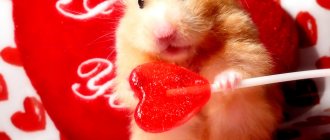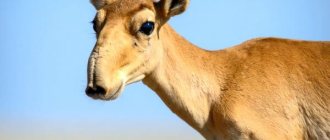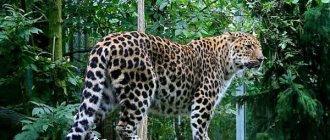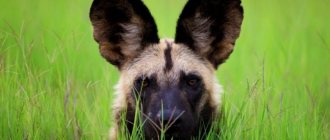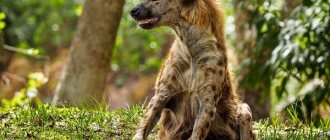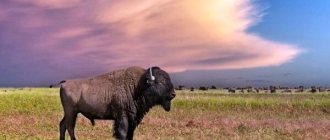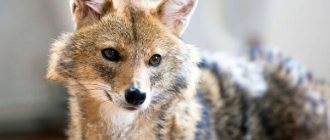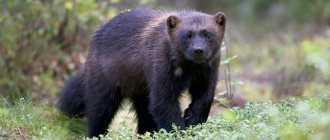The Zagros is the largest mountain system in modern Iran. Since about the middle of the 20th century, scientists have been finding in this area the remains of domestic animals that were clearly domesticated by ancient people. Firstly, this is evidenced by the fact that this region was one of the centers of the emergence of agriculture. Secondly, the discovered animal bones are much smaller than the remains of wild individuals, which is the main sign that they were domesticated. After a long pause, scientists have recently resumed research in this region and made several important discoveries. The most important of them says that goats were domesticated about 10,000 years ago. But where exactly did this happen, who were the ancestors of modern domestic goats, and why were they useful to people? Let's figure it out.
Scientists regularly study the history of animal domestication. They recently learned details about goats
Habitat
For the first time, goats began to be domesticated by the peoples of Turkey, Syria, and Lebanon, that is, the center is Asia Minor. These animals were domesticated there several thousand years BC. Then Greece, the Mediterranean islands, and Europe picked up this idea. Since goats are very unpretentious animals, they quickly spread to many countries.
Their own breeds were developed in the countries of Southern Europe and Africa, as well as the Middle and Near East. They were brought to Asia and Africa for the purpose of breeding in arid climatic conditions, in which not every livestock can live.
Now they make up the largest population there. In Germany, France and Switzerland, the most valuable breeding stock is concentrated today. Since domestic goats are the ancestors of mountain goats, these animals subconsciously strive for the same living conditions in which their ancestors lived.
They love hills, climbing various buildings, fallen trees, and stones. They can jump 1.5 meters in height. In addition to stationary obstacles, goats can jump on the back of a horse or donkey, and sometimes even their brothers and sisters.
They do this more out of curiosity and love for “climbing” than out of any necessity. You can find many photos of goats climbing various obstacles, or even grazing on a tree.
Origin story
Long before our era, people began to think about domesticating different types of animals. The goals were different - dogs were used for hunting and protection, while the horse became an excellent transport and assistant on the farm. In our region, the breeding of domestic goats began long before the selection and breeding of horses - almost 10 thousand years ago.
As in all cases, the ancestor of the modern domestic version of the animal lived in the wild. In our case, these were mountain goats, which are still found in the mountains of the Caucasus and Asia. It was the Asian tribes that were the first to domesticate this animal. Several hundred years later, the ancient Greeks came to this.
This was an excellent decision, since the goat adapted well to different conditions. Thanks to its small size, it was easy to feed it - it was enough to give it simple food, or take it to the grass that grows near the settlement.
Goats grow up to one meter in height and up to one hundred kilograms in weight, and therefore even children and teenagers could care for them.
Features of a goat
Agricultural goat breeds are divided into dairy, meat, wool and down. The best breed bred for milk is the Saanen dairy goat . This animal, bred in Switzerland, is quite large in size. Height at withers 75-89 cm, weight 60-90 kg.
Almost all goats of this breed have a white color, short hair, small erect ears, sometimes earrings, and they do not have horns. On average, these goats produce 5-6 liters of milk per day. Moreover, with an abundance of food, goats spend all the energy obtained from it on the production of milk, and not on weight gain.
The most common meat breed is the Boer goat . It was bred by South African farmers, and the weight of young specimens is 90-100 kg, and adult animals weigh 110-135 kg. The largest herds are concentrated in New Zealand, South Africa, and the USA.
Surely many have heard about Angora wool. Goats of the same breed are its main suppliers. Their fur is long, wavy or curly, hanging down to the ground. These are small animals, weighing about 50 kg, with 5-6 kg. of which is pure wool fleece. They are bred en masse in Australia and some European countries.
The Kashmiri goat breed is famous for its finest, light, elastic down, which has excellent heat-insulating properties. Weightless, openwork products made from the fluff of Kashmiri goats are so soft and thin that the shawl can be pulled through a ring.
Pictured is a Kashmiri goat
Varieties of animal breeds
The fur of mountain goats is dense and dense, consisting of coarse hairs, with a thick, developed undercoat.
According to generally accepted gradation, mountain goats are divided into three groups:
- ibex (ibex, Ethiopian ibex, Pyrenees, Nubian ibex, Siberian);
- tours (Caucasian, Dagestan, etc.);
- goats (wing-horned, bezoar - the ancestor of domestic artiodactyls).
Animals differ from each other in appearance - the structure of the horns and other characteristics. The lifestyle and nutrition of animals are similar.
Capricorn breeds:
- Nubian goat. Animals live in Africa in semi-desert mountainous areas. The goats are medium in size, light brown or dark brown in color. They are distinguished by massive large horns that bend back in a beautiful semicircle.
- Ibex. Less common European mountain goats. The weight of males reaches 100 kg, females are twice as light. The color is brown and brown. The horns of males are meter long, straight, with tips curved back.
- Siberian. Numerous representatives of the subspecies live in the mountainous regions of Altai and Siberia, Afghanistan, and India. The color of the animals is dark brown, the horns are large, with transverse intercepts. The goats are medium in size, weighing up to 70 kg.
- Iberian. Small goats of a light sandy color with black spots on the legs, face and belly. Horns up to 60 cm in length, lyre-shaped. Goats live in the Pyrenees.
Caucasian mountain goat
Types of tours:
- Caucasian. Animals live in the Caucasus Mountains. The horns of goats are powerful, growing in an arched manner. Colors are light brown and brown. The live weight of males reaches a hundredweight, females up to 50 kg.
- Kuban. Goats are common in mountainous areas in Russian-Georgian territories. Externally, the Kuban Tur is similar to its Caucasian relative, differing in thicker and longer hair.
- Dagestan. It differs from other aurochs in the structure of its horns: they are lyre-shaped, but twisted in a spiral.
Other goat breeds:
- Wink-horned goat, or markhor. Distributed in the mountains of Asia, America and Europe. The meter-long horns (in some individuals they can reach 160 cm) of the animal do not bend in an arc, but look vertically upward, twisting with a screw. Colors gray and white. The horned goat is listed in the Red Book.
- Bezoar, or bearded, goat. Ancestor of domestic artiodactyls, distributed from Western Asia, the Caucasus to Afghanistan. The weight of the animals ranges from 30 to 90 kg, and their color is black and red. The horns are saber-shaped and not wide.
On a note. Wild goats were domesticated about 9 thousand years ago, presumably in what is now Iran. At first they were kept as meat animals and for hides, later for milk. The goat was the first domestic animal to be milked.
Lifestyle
The external similarity of goats and sheep does not indicate the sameness of their characters. Goats do not have a very developed herd sense; in the pasture they do not try to stay in a group. In addition, they are much more cunning and smart than sheep. Goats love to explore new territories, find various loopholes to new pastures.
Although, if you bring a goat to a new place, then at first they will stay close to their owner. But this is by no means an indication of their cowardice - unlike sheep, goats are quite capable of protecting kids from small predators. Goats are quite smart animals, they can be trained, they are able to find their barn on their own, walk calmly on a leash, and carry light loads.
It happens that they become attached to one owner and allow themselves to be milked only by him. These playful animals love to lick high places and can often be seen on the roof of a house or on a tree.
If goats graze in the same herd with sheep, then you can highlight their cleanliness - they will not walk in the dust next to a dense crowd of sheep, and at a watering hole they will not climb with their feet into the water, as sheep will do, but will carefully kneel down and drink clean water .
Males and females
You should not keep a goat with goats in the same pen or goat shed. This is not advisable unless you want the milk you get from your goats to have an unpleasant odor. It comes from goats, which have a very unique smell.
It is good for young animals to have a separate room or pen in which they will spend the growing period together, after which they will live with the rest of the goats.
During times when you don't have a new addition, this room can be used either for quiet animal care, or for slightly problematic goats. Before moving the kids there, you need to thoroughly clean and disinfect it.
Goat care
Goats are unpretentious animals, the main thing is to provide them with warm conditions. In conditions of cold and high humidity, they can get pneumonia or be poisoned by poisonous grass. In order for the milk to be tasty and not bitter, you need to choose pastures where there are no herbs such as wormwood.
Keeping goats
When kept in stalls, animals do not need to be tied, except for the most pugnacious ones. They try to place animals of approximately the same age and size in one stall. Goats need to be kept warm and free of drafts during the winter.
Nutrition
Goats are practically omnivorous. They eat many types of plants, and can pull them out by the roots, which has a bad effect on the further greening of the pasture. In addition to grass, they eat tree bark, branches, and leaves. They also like to taste completely inedible things: cigarette butts, ropes, paper bags.
Goat eats grass in the meadow
In winter, they are fed waste from the human table, boiled root vegetables, but hay must be included in the diet. In autumn, animals pick apples from the ground, which significantly increases milk yield. When kept in a pen, they must be given at least 8 kg. herbs a day.
Reproduction and lifespan
Sexual maturity occurs at 3-6 months, but goats are fully developed only by 3 years. Mating should be arranged no earlier than at the age of 1.5 years. One goat can cover a herd of 30-50 goats. The resulting pregnancy develops over 145-155 days and ends with the birth of 1-5 kids. The babies are born immediately with fur and good eyesight, and within a few hours they are jumping around their mother.
In the photo there is a baby goat that was recently born
Life expectancy is 9-10 years, maximum 17. But animals up to 7-8 years of age are suitable for agricultural use. Despite all the benefits of goats for humans, in the wild they harm the ecosystem and are included in the list of dangerous invasive species.
They eat large amounts of grass, contributing to soil erosion, and also being competitors for more fastidious animals that simply die out from lack of food. Therefore, goat populations were exterminated on the 120 islands to which they were previously introduced.
